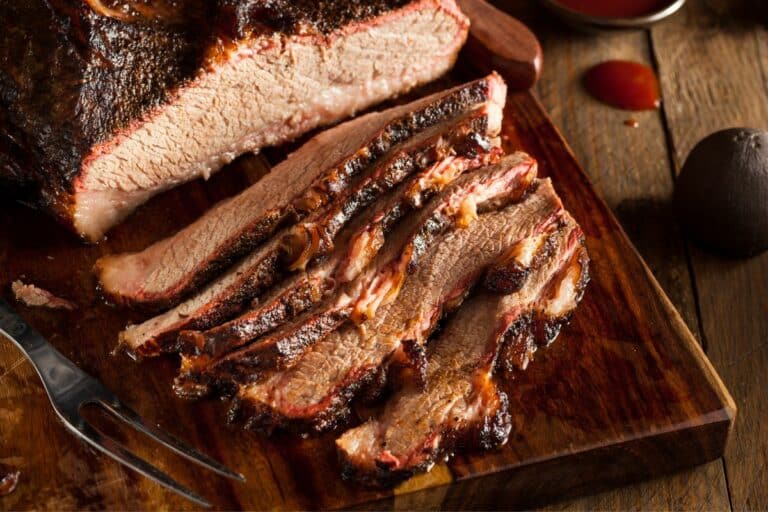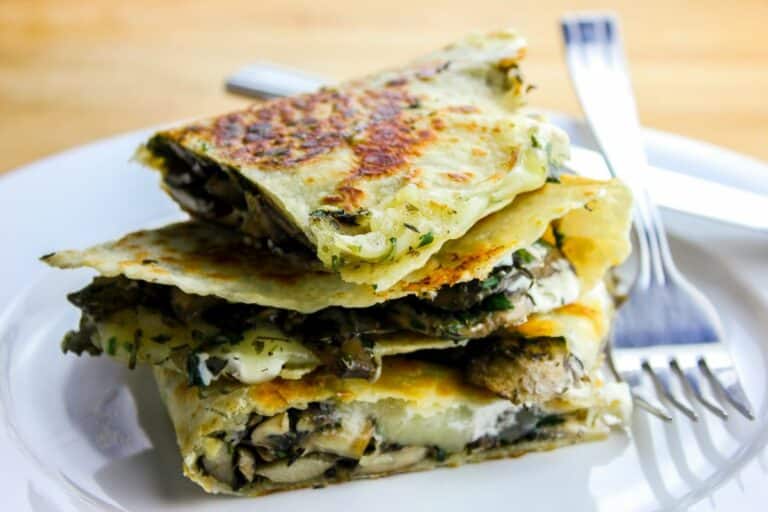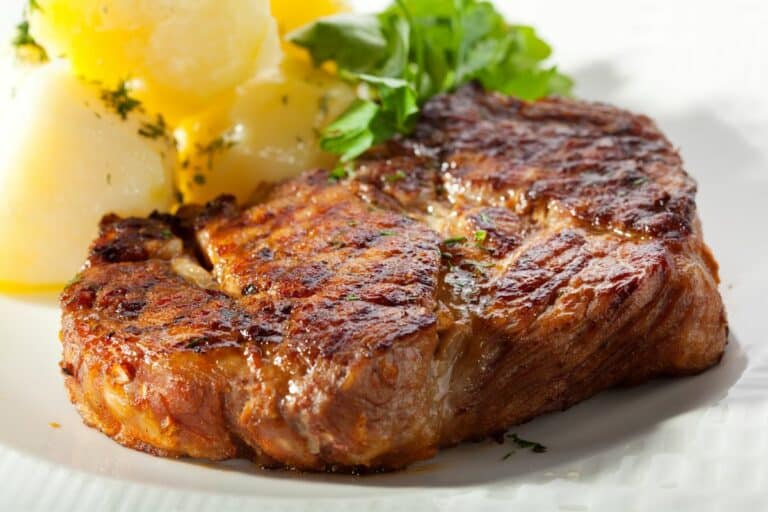Fruity Mild HeatDried Guajillo Chiles
Master dried guajillo chiles with Oliver, Natalia, and Victor. Inspired by Richard’s Puebla market expertise and our 50+ countries of travel, this comprehensive guide delivers preparation techniques, recipes, and family-tested wisdom for authentic Mexican cooking.
The Complete Guide to Dried Guajillo Chiles
Welcome to our comprehensive dried guajillo chiles guide. At Mangoes and Palm Trees, Oliver (15+ years hospitality across 50+ countries), Natalia (Siberian-Italian culinary storyteller), and Victor (born November 24, 2016, Koh Samui) bring you authentic expertise. Inspired by our friend Richard’s market discoveries in Puebla (2010–2014) and Medellín, we’ve tested guajillo applications throughout Thailand (2016–2018) and Vietnam (2022–present). Victor, our 9-year-old taster, approves these mild, fruity chiles for family cooking.
Dried guajillo chiles represent the workhorse of Mexican cooking—mild enough for families yet complex enough for professional chefs. With 2,500–5,000 Scoville Heat Units (SHU) and distinctive fruity, smoky character, they deserve a permanent place in your spice cabinet. According to Wikipedia, guajillos are dried mirasol peppers, a staple throughout Mexico for centuries. This guide combines culinary tradition with modern food science.
What Are Dried Guajillo Chiles?
Dried guajillo chiles are the dried form of mature red mirasol peppers (Capsicum annuum). The name “guajillo” derives from the Spanish word “guaje” (hollow pod), referencing the pepper’s chambered interior. These chiles measure approximately 2–3 inches long with deep red-brown wrinkled skin and represent one of Mexico’s most beloved dried peppers. (Specialty Produce)
The transformation from fresh mirasol to dried guajillo involves careful harvesting of fully mature peppers, followed by slow drying in the sun or mechanical dehydrators. This gentle process concentrates flavors—the fruity undertones deepen, and subtle smoky notes emerge. Richard shared how traditional producers in San Luis Potosí still use time-honored methods passed down through generations. (Nature’s Produce Encyclopedia)
The Story Behind Guajillo Chiles: Richard’s Market Discovery
Our journey with guajillo chiles began through Richard, whose passion for Mexican food culture transformed our understanding of dried peppers. During explorations of Puebla’s legendary markets (2010–2014) and Medellín’s vibrant food scene, Richard introduced us to guajillo’s unique flavor profile—fruity, mild heat, with subtle smoky undertones. He explained how these chiles became Mexican cooking’s foundation centuries ago.
When we reached Thailand (2016–2018), we found ourselves recreating Richard’s guajillo-based sauces in our Bangkok kitchen, adapting them to tropical ingredients. Victor, then just a toddler, grew fascinated by the deep red color and gentle heat. By the time we moved to Vietnam (2022–present), guajillo had become essential—we sought out Asian suppliers who carried authentic Mexican chiles, understanding their irreplaceable value. (Mexican Made Meatless)
Flavor Profile & Heat Level: Understanding Guajillo Character
Dried guajillo chiles deliver a sophisticated flavor experience that makes them ideal for home and professional cooking:
Flavor Notes
- Fruity (plum, raisin, dried cherry)
- Mildly smoky
- Earthy & savory
- Subtle sweetness
- Slightly woody undertone
Heat Profile
- 2,500–5,000 SHU
- Milder than jalapeño
- Much less intense than cayenne
- Warm, lingering heat
- Perfect for families
In our Thailand kitchen, we discovered that guajillo’s 2,500–5,000 SHU rating makes it more accessible than many peppers, yet sophisticated enough for complex sauces. Victor could taste guajillo-based preparations without discomfort, while adults appreciated the depth. This balance explains why Richard prioritized guajillo in his Mexican pantry recommendations. (¡HOLA! JALAPEÑO)
Preparation Techniques: From Toasting to Blending
Proper preparation unlocks guajillo’s full potential. Richard taught us these essential techniques, which we’ve refined through years of testing:
Step 1: Toasting
Heat a cast-iron skillet to medium temperature (not high—burning creates bitterness). Toast dried guajillos 1–2 minutes per side until fragrant but not charred. This step awakens dormant aromatic compounds and deepens flavor. According to MasterClass, proper toasting is essential for professional-quality results.
Step 2: Rehydration
Soak toasted chiles in hot (not boiling) water for 20–30 minutes until completely pliable. The soaking liquid becomes precious—retain it for sauces. This gentle rehydration preserves delicate flavors while making peppers easy to seed, stem, and blend. (Mexican Please)
Step 3: Grinding
For powder, remove stems and seeds from dried (not rehydrated) chiles, then grind in a spice mill. For sauces, blend rehydrated chiles with their soaking liquid, garlic, and aromatics. Victor watches this process with fascination—the transformation from whole pepper to silky sauce demonstrates culinary magic.
Where to Use Dried Guajillo Chiles: Recipes & Applications
Dried guajillo chiles excel in diverse culinary applications. Richard’s market wisdom combined with our testing reveals optimal uses:
🍲 Sauces & Salsas
Blend rehydrated guajillo with tomatoes, garlic, and cumin for versatile sauces. Guajillo salsa works beautifully with enchiladas, tacos, and eggs. The fruity undertones complement both savory and slightly sweet applications.
🌮 Tacos & Marinades
Create marinades by blending guajillo with lime, honey, and spices. Perfect for beef, chicken, pork, and vegetables. Victor specifically requests guajillo-marinated tacos—the gentle heat allows him full participation in family meals.
🥣 Stews & Soups
Add guajillo to bean stews, posole, and broths for layered depth. The fruity character complements legumes beautifully. Simmer whole chiles or add ground powder depending on desired texture.
🥄 Rubs & Seasonings
Toast and grind guajillo for dry rubs on meats before smoking or grilling. Combines beautifully with cumin, oregano, and garlic. Store ground guajillo in airtight containers for quick weeknight cooking.
🍝 Pastas & Rice
Blend guajillo sauce with cream for pasta, or use as base for rice dishes (arroz con guajillo). The mild heat ensures dishes appeal to broad palates while maintaining complexity.
🍴 Traditional Dishes
Chiles Rellenos, Enchiladas Guajillo, and Mole Guajillo represent classic applications. Each dish celebrates guajillo’s fruity, mild character in traditional preparations passed through Mexican families for centuries.
According to Serious Eats, guajillo represents the bridge between mild and spicy—approachable for beginners yet sophisticated for experienced cooks. (Southern Living)
Storage & Substitutions: Building Your Spice Confidence
Proper storage ensures your dried guajillo chiles maintain potency for months. Keep them in airtight containers (glass jars work beautifully) in cool, dark places away from sunlight and heat. Natalia’s Siberian preservation knowledge, combined with our Vietnam experience (2022–present), taught us that frozen storage extends viability 2–3 years.
Substitution Guide
When guajillo proves unavailable, consider these alternatives (though authentic guajillo has irreplaceable qualities):
- Ancho Chile: Similar heat (1,000–2,000 SHU), sweeter profile. Use 1:1 ratio. (Wikipedia)
- Pasilla Chile: Slightly more heat (250–3,600 SHU), earthier character. Reduce quantity by 25% to balance intensity.
- New Mexico Chile: Similar SHU but earthier, less fruity. Use 1:1 but add 1 tbsp honey per sauce to restore sweetness.
- Chile de Árbol: Much hotter (5,000–8,000 SHU)—use sparingly, approximately 1/4 the quantity of guajillo.
Richard always emphasized: authentic guajillo creates irreplaceable depth. However, understanding alternatives empowers creative cooks. (The Spruce Eats)
Frequently Asked Questions About Dried Guajillo Chiles
Insights from 15+ years in global hospitality and 50+ countries of culinary exploration
What exactly are dried guajillo chiles?
Dried guajillo chiles are mature red mirasol peppers (Capsicum annuum) that have been sun-dried or mechanically dehydrated. They deliver 2,500–5,000 SHU with fruity, mildly smoky flavor. They’re the workhorse of Mexican cooking. (Specialty Produce)
How hot are guajillo chiles on the Scoville scale?
Guajillo ranges 2,500–5,000 SHU—milder than jalapeño (2,500–8,000 SHU) and much gentler than cayenne (30,000–50,000 SHU). This mild heat makes guajillos perfect for families while remaining sophisticated for professional cooking.
Can I substitute guajillo chiles with other peppers?
Yes, ancho or pasilla work well—adjust quantities for heat differences. Ancho (1,000–2,000 SHU) is sweeter; pasilla is earthier. New Mexico chiles substitute with honey added. However, guajillo’s irreplaceable fruity profile means substitutes create different dishes. (Mexican Made Meatless)
How should I store dried guajillo chiles?
Keep in airtight containers in cool, dark places up to 6 months. Freeze in sealed bags for 2–3 years. Proper storage preserves potency and prevents moisture damage. Temperature stability matters more than anything else.
What dishes traditionally use guajillo chiles?
Enchiladas Guajillo, Chiles Rellenos, Mole Guajillo, and guajillo-based sauces represent classic applications. Salsas, marinades, stews, and rice dishes all benefit from guajillo’s fruity, mild character. The mild heat makes it family-friendly. (Food & Wine)
What are the health benefits of guajillo chiles?
Research shows dried peppers like guajillo contain antioxidants and anti-inflammatory compounds. Capsaicin supports metabolism. Vitamin C and carotenoids boost immunity. However, guajillo’s greatest benefit is making nutritious Mexican dishes genuinely delicious for families. (PMC Research)
Mastering Dried Guajillo Chiles: Your Culinary Foundation
Dried guajillo chiles deserve a permanent home in every kitchen. Through Richard’s market wisdom, our travels across 50+ countries, and Victor’s enthusiastic taste-testing, we’ve discovered that guajillo represents Mexican cooking’s accessible entry point—mild enough for families yet sophisticated enough for restaurant-quality dishes.
From our Bangkok kitchen (2016–2018) through our Vietnam home (2022–present), guajillo has proven irreplaceable. Its fruity, mild character transforms simple ingredients into memorable meals. Start with one pound of guajillo chiles, toast them mindfully, and taste your way to mastery. Share your creations with #MangoesPalmTrees. Happy cooking!
Explore more inspiration:
- Guajillo Chili Sauce Recipe
- Complete Mexican Chile Guide
- Dried Chipotle Chile Guide
- Enchiladas Guajillo Recipe






